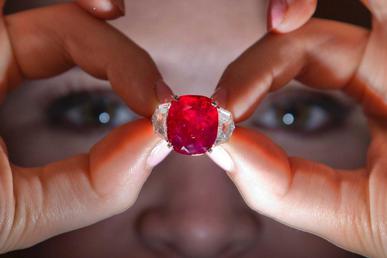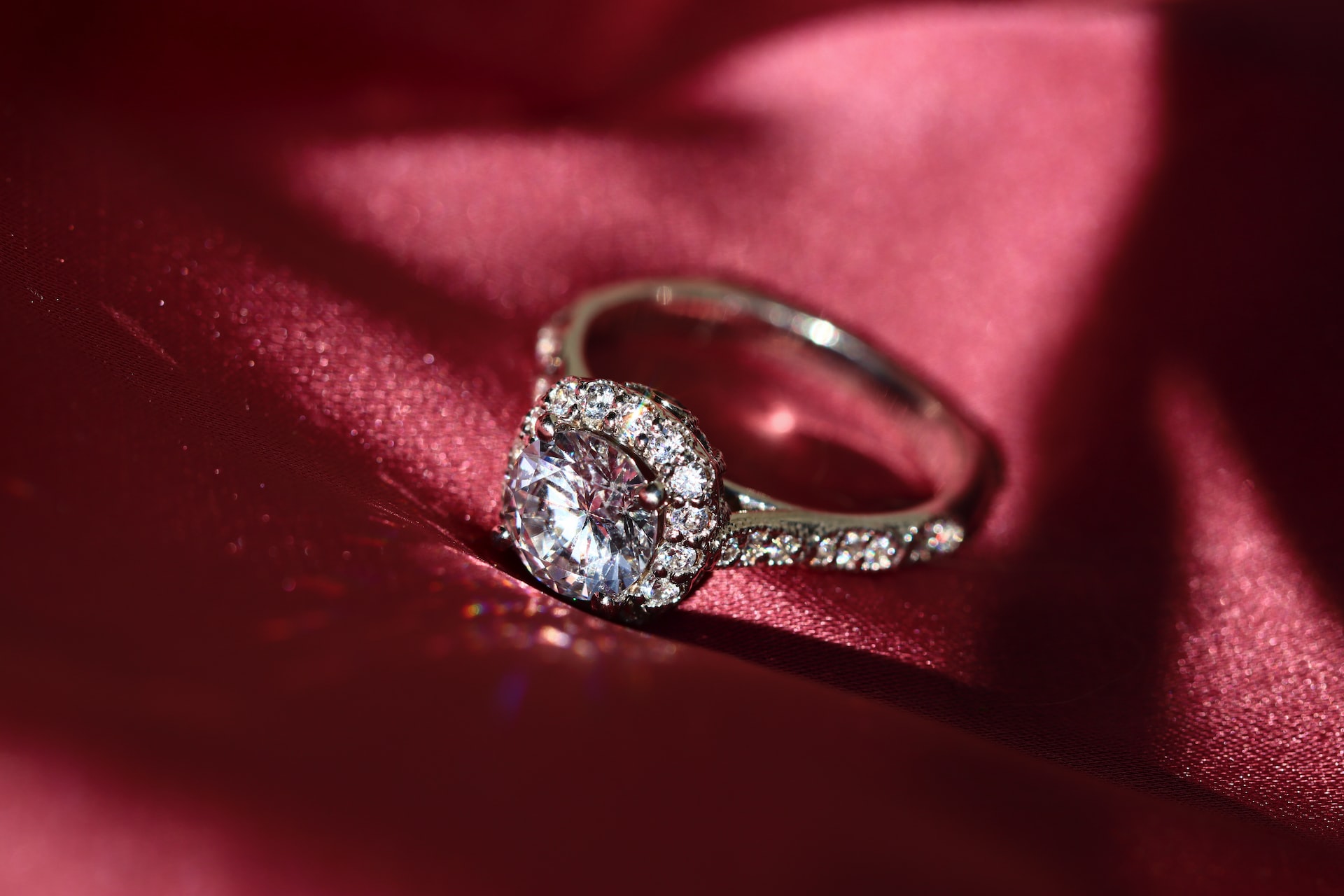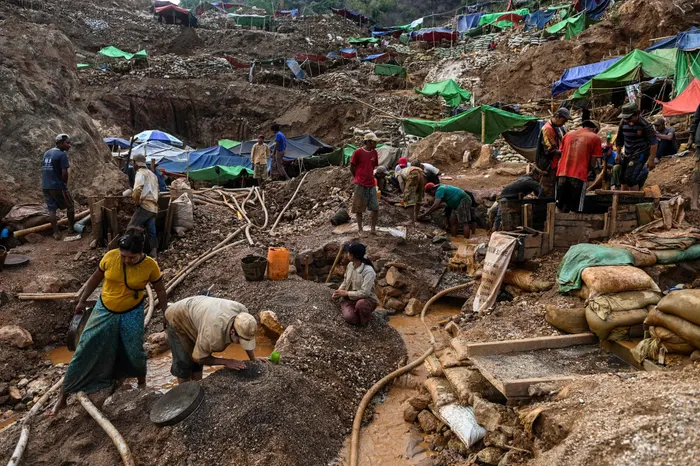What is Refractometer
A Scientific Instrument which is used to identify gemstones using the refraction of light is a Refractometer.

How Refractometer Works
The base for Refractometer is the refraction of light. When light travels through different mediums, (ex. Air & Water) The direction of the light changes this scenario is called the
Refraction of Light.
How To Use Refractometer
Step – 01
Clean the refractometer glass top with Isopropyl Alcohol using Clean cotton.
Step – 02
Put some Refractometer fluid or liquid (Ex: Methylene Iodide = 1.737 ) on the Glass Top. (Small Drop)
Do you Know = Refractometer fluid is used to reduce the over-refraction of the glass top of the Refractometer and send the light rays directly to Gemstone perfectly to calculate Refraction Index
Step – 03
Keep the gemstone on the glass top of the refractometer (Make Sure Refractometer Fluid touches the Gemstone sample)

Step – 04
Bring your eyes near to eyepiece and See the Readings.
How to correctly get readings from Refractometer
Initially, after keeping the gemstone in a refractometer you should see the results using the eyepiece. Then rotate the eyepiece in any direction, If the readings change those stones are
Uniaxial or Biaxial (Double Refractive) gemstones. We will learn about these gems in the latter part of his blog…
To correctly get the readings we should learn about Isometric or Single Refractive & Double Refractive stones.
Things to Know
R.I. – Refractive Index
D.R. – Birefringence
O.C. – Optic Character
O.S. – Optic Sign
Isometric or Single Refractive Gem Stones
Isometric Gemstones are gems that come under a cubic crystal system which is singly refractive. Due to this, the reading won’t change even if we rotate the stone or eyepiece in the
refractometer. (Ex. Diamond, Garnet Obsidian, and Spinal)

Double Refractive Gem Stones
Double Refractive gemstones are which come under the other 6 crystal system. (Tetragonal, Hexagonal, Orthorhombic, Trigonal, Triclinic & Monoclinic) These stones are Double refractive due to the existence of the Optic Axis. Double Refractive stones can be Divided into 2 types from No. of Optic axis in gemstones.
1.Uniaxial (Single Optic Axis)(Ex. Corundum,Tourmaline,Zircon)
2.Biaxial (Double Optic Axis) (Ex. ,Topaz,Iolite)
DO YOU KNOW: We can only Identify gemstones in the Refraction Index between 1.3 – 1.8. This means we cannot Identify Gemstones with a refractive index below 1.3 and a Refraction index higher than 1.8. Since we cannot read the Refraction Index of Diamonds, Zircon Etc. which have a higher refractive index.
Identifying Gemstones
Finding R.I. of Single Refractive Gemstones.

(A) First Code the Gemstone Sample and Record the Number.
(B) Weight the Gemstone and Enter.
(C) Observe the Colour of the gem and mention it here.
(D) Observe the Shape & Cut of the Gem and enter.
(E) Get the Readings and Enter. Here we should get the first reading and rotate the eyepiece if the readings did not change that means it’s a single refractive stone then we should rotate the stone to 45 Degrees and take the readings 4 Times and enter here. (Most of the time we get the same readings or 2 Different readings with a minor Change Soon after this we should find the R.I Table and search for R.I We found from our sample)
(F) We cannot find Birefringence due to a single Refractive stone
(G) We cannot find Optic Character due to a single Refractive stone
(H) We cannot find Optic Sign due to a single Refractive stone
Finding R.I. of Double Refractive Gemstones.
Uniaxial Gemstones

(A) First Code the Gemstone Sample and Record the Number.
(B) Weight the Gemstone and Enter.
(C) Observe the Colour of the gem and mention it here.
(D) Observe the Shape & Cut of the Gem and enter.
(E) Get the Readings and Enter. Here we should get the first reading and rotate the eyepiece if the reading changes that means it’s a double refractive stone then we should rotate the stone to 45 Degrees and take the readings 8 Times. In Every 45 Degrees, we should take 2 readings by rotating the eyepiece and entering here. When entering readings we should always write the higher reading on one side and the lower reading on the other side to calculate the D.R value, Optic Character, and Optic Sign.
(F) To Calculate D.R Value Here We should get the Highest Value in the Highest side reading and Deduct it from the Lowest value in the Lowest Side of the readings. The remaining value will be D.R. Value.
(G) Here We are finding whether this stone is Uniaxial or Biaxial. (For Uniaxial Stones One side of the readings will be the same therefore you will enter here Uniaxial.
(H) Initially, we entered Higher reading on one side and a Lower value on Another side We should consider the higher value as Positive (+) and lower-Value side as Negative (-), When the + side values change the O.S will be +, and when – side values changes then the O.S will be -. For Double refractive stones, we can identify the gemstone after matching the R.I, D.R, O.C & O.s of samples with the R.I Table.
All values should be Matched with R.I Table, conclude.
Picture of Double R.I Stones.
Biaxial Gemstones

(A) First Code the Gemstone Sample and Record the Number.
(B) Weight the Gemstone and Enter.
(C) Observe the Colour of the gem and mention it here.
(D) Observe the Shape & Cut of the Gem and enter.
(E) Get the Readings and Enter. Here we should get the first reading and rotate the eyepiece if the reading changes that means it’s a double refractive stone then we should rotate the stone to 45 Degrees and take the readings 8 Times. In Every 45 Degrees, we should take 2 readings by rotating the eyepiece and entering here. When entering readings we should always write the higher reading on one side and the lower reading on the other side to calculate the D.R value, Optic Character and Optic Sign.
(F) To Calculate D.R Value Here We should get the Highest Value in the Highest side reading and Deduct it from the Lowest value in the Lowest Side of the readings. The remaining value will be D.R. Value.
(G) Here We are finding whether this stone is Uniaxial or Biaxial. (For Biaxial Stones Both sides of the readings Value will be Different therefore you should enter here Biaxial.
(H) Finding Optical Signs in Biaxial Stones is a bit Different. Initially, we entered Higher reading on one side and a Lower value on the Other side We should consider a higher value as a Positive (+) and a lower-Value side as a Negative (-). To Find O.S. We should do the Following Calculation likewise.
- We should get the (-) Negative Sides Highest Value and Deduct it, (-) Negative Sides
Lower Value. (Getting the Variance) - We should get the (+) Positive Sides Highest Value and Deduct it, (+) Positive side
Lower Value. (Getting the Variance)
We will get 2 answers here For Optic Sign we should get the highest Value side.
( That Means if Negative Sides get a higher Variance the Optic sign will Be (-) Negative, & if the Positive side gets a higher Variance the Optic Sign will be (+) Positive. For Double refractive stones, we can identify the gemstone after matching the R.I, D.R, O.C & O.s of samples with the R.I Table. All values should be Matched with R.I. Table, to conclude.
All calculations should be entered according to the above formats to minimize errors.
Are you an enthusiastic gemology learner we are ready to help you. To kickstart please be kind enough to contact us.
Buy a Refractometer and Get a free Demonstration on how to use the refractometer from the beginning and Get a free 9 Pieces of gemstone samples.
Click Here
Therefore, we have explained how to identify gemstones using refractometer crystal clearly. Make sure you win the Gem World.







 To correctly get the readings we should learn about Isometric or Single Refractive & Double Refractive stones.
To correctly get the readings we should learn about Isometric or Single Refractive & Double Refractive stones.













